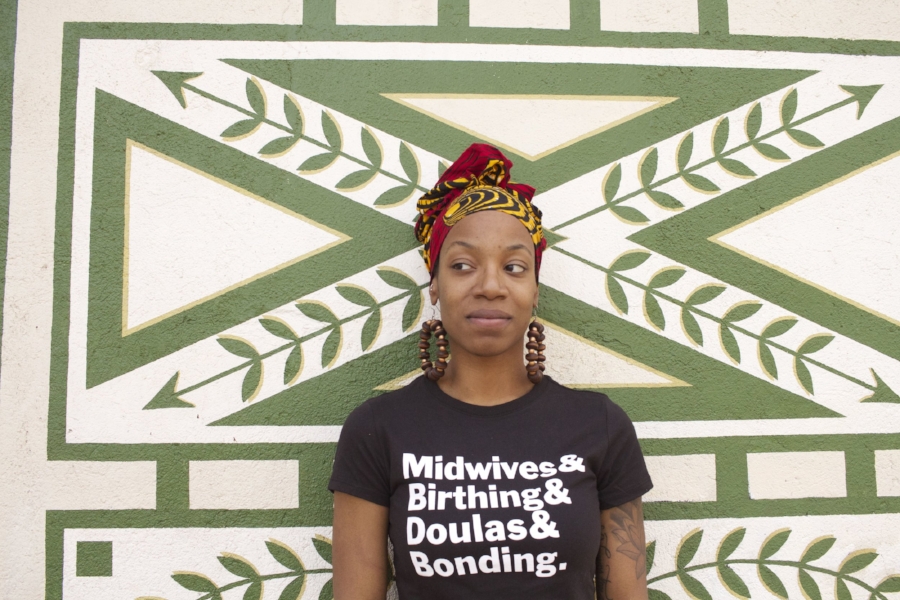July is Fibroid Awareness Month. This month, we’re talking about all things Black women and fibroids, and answering your questions about this uterine and reproductive health issue.
Your mom had surgery to remove several, and one was the size of a grapefruit.
They’re the reason why your friend just had surgery.
Your fatigue and incredibly painful and super heavy periods are from anemia caused by them.
They’re fibroids.
What Black woman doesn’t know another Black woman who hasn’t dealt with these benign uterine tumors?
Black women and fibroids seemingly go hand in hand. Did you know there’s a reason for that? It’s because we actually are disproportionately affected by fibroids (also known as myomas).

Black Women and Fibroids: An All-Too-Common Health Issue
While there aren’t specific numbers as to how many Black women suffer from fibroids, “more than 80%” of Black women in the United States have a fibroid by age 50, according to the National Institutes of Health.
A New York Times article written by OB-GYN Hilda Hutcherson made the picture even starker: “Black women … receive diagnoses of fibroids roughly three times as frequently as white women,” she wrote. “Some estimates show that a quarter of black women between 18 and 30 have fibroids, compared with 7 percent of white women.”
“Black women develop fibroids earlier, larger in size, and with more aggressive symptoms than other ethnicities,” says Dr. Bruce Lee, a Newport Beach, California-based gynecologist and the inventor of Acessa, a treatment for fibroids.
“This affects African women across the diaspora,” says Dr. Ruth Arumala, an OB-GYN and fibroid specialist in Mansfield, Texas.

What Causes Fibroids in Black Women?
But why do fibroids affect Black women more? What’s the link between Black women and fibroids?
While a definitive answer hasn’t been found yet, there are a few potential reasons why Black women develop fibroids at higher rates than women of other races.
Let’s take a look.
1. Genetics
Many of us learn what fibroids are by witnessing our loved ones—mothers, aunties, cousins—experience the disorder years before we get diagnosed with the same issue.
There may be a logical explanation for that.
Though it’s still being investigated, “there is a genetic predisposition,” says Dr. Tiffany Bogan Woodus, an obstetrician-gynecologist in Cedar Hill, Texas.
“Fibroids definitely run in families,” she says, “so if you have women in your family with fibroids, you are at increased risk.”
2. Chemical and Hormone Exposure
Whether it’s from food, beauty products, or birth control, Black women are regularly—and overly—exposed to toxic chemicals and hormones.
Hair relaxers, in particular, have been linked to an increased risk for fibroids. The endocrine-disrupting chemicals found in these products can increase the production of hormones like estrogen and progesterone, which can cause fibroids to form.
There’s a connection between the hormonal, stress, and diet factors that may contribute to why Black women and fibroids are so common.
“A study of more than 23,000 African-American women found increased risk of fibroids among those who had the longest and most frequent use—and most burns—from hair [relaxers],” according to McLeod Health.
Fibroids also depend on estrogen to grow. Any sort of hormone imbalance that causes estrogen to be dominant can contribute to unwelcome symptoms.
“We definitely see a predisposition towards higher estrogen levels in the growth of fibroids,” says Dr. Woodus. “There are phases in our lives that we are exposed to higher estrogen levels like during pregnancy. By the same token, in menopause, when estrogen levels decline, you see the shrinkage of fibroids. They may not completely disappear, but they aren’t stimulated to grow by estrogen.”
3. Stress and Racial Discrimination
Stress is often an overlooked health disruptor. Studies have connected chronic stress to two bodily processes that can have adverse effects on our health: weathering (biological aging and cellular deterioration) and allostatic load (defined in one 2007 study as the “cumulative exposure to stress over the lifecourse”).
It causes “an inflammatory environment in our bodies,” which leads to poor health outcomes, says Dr. Woodus.
A huge source of stress for Black women is racism. We navigate overt racist acts, microaggressions, and systemic racism countless times throughout our lifetimes.
The aforementioned study found that “perceived racism was associated with an increased risk of uterine myomas in US-born black women.”
4. Diet and Obesity
America has a major food-equity problem: Not everyone has the same access to (or can afford) healthy, nutrient-rich foods. This has led to a health crisis in the Black community, as obesity causes the type of bodily inflammation that leads to poorer health.
Afterall, the fat on our bodies, especially in the abdominal area, isn’t just hanging out and taking it easy.
… weight gain can cause produce hormones that spur fibroid growth.
“Obesity and extra adipose tissue affects everything,” says Dr. Arumala. “Peripheral fat produces hormones including a type of estrogen,” which we know has been linked to fibroids.
Additionally, excess body fat in younger girls may contribute to earlier puberty, which means earlier production of hormones like estrogen. This earlier exposure to hormones may relate to why Black women develop fibroids earlier than other non-Black women.
5. Low Vitamin D Levels
Vitamin D is a crucial vitamin when it comes to limiting fibroid growth. However, “only 10% of African-Americans have adequate levels,” according to the White Dress Project, an organization committed to bringing national and global awareness to fibroids.
Our richly melanated skin has inherent sun protectant properties. It’s designed to manage reasonable amounts of sun, which means it takes slightly more sunlight exposure to get the vitamin D that we need.
6. All of the Above
There’s a connection between the hormonal, stress, and diet factors that may contribute to why Black women and fibroids are so common.
“African-American women have the highest rates of obesity or being overweight compared to other groups in the United States,” the Office of Minority Health reports. “About 4 out of 5 African-American women are overweight or obese. In 2018, non-Hispanic blacks were 1.3 times more likely to be obese as compared to non-Hispanic whites.”
We know we’re more likely to experience racism, which is a huge source of stress.
“Stress causes an increase in cortisol, a stress hormone, which causes metabolism to slow down,” Dr. Arumala explains.
A slower metabolism coupled with less nutrient-dense food choices can lead to weight gain. And that weight gain can cause produce hormones that spur fibroid growth.
This is all conjecture though, as studies have yet to definitively prove these connections. Perhaps because we’re so prone to developing them, Black women are active in advocating for research, funding and education on fibroids and Black policy makers have rallied to introduce legislation on fibroid education and research.
With so many women coping with fibroids, we wanted to look into the current options for treating them. In the next article we will talk about our options for managing and removing fibroids.

















